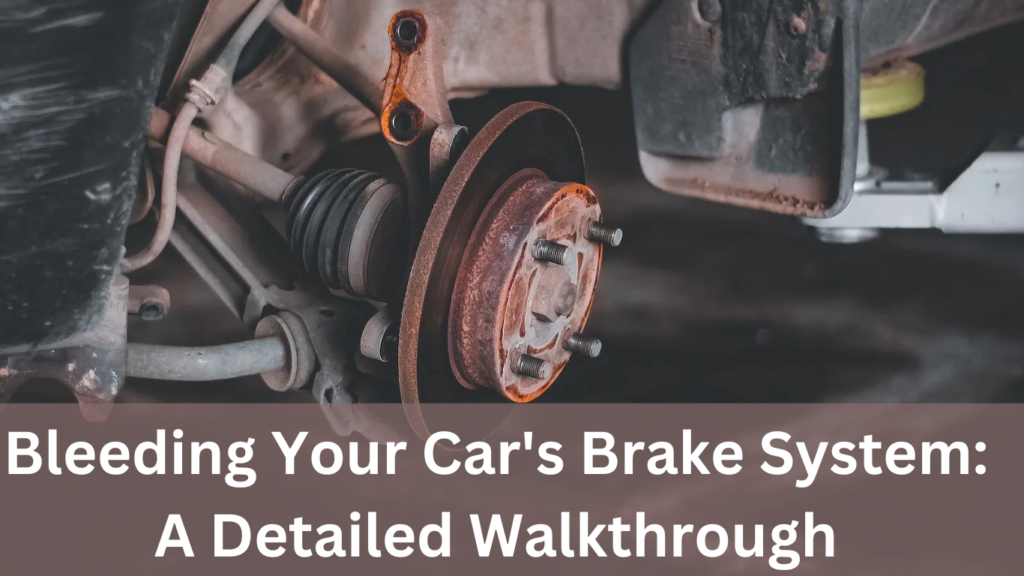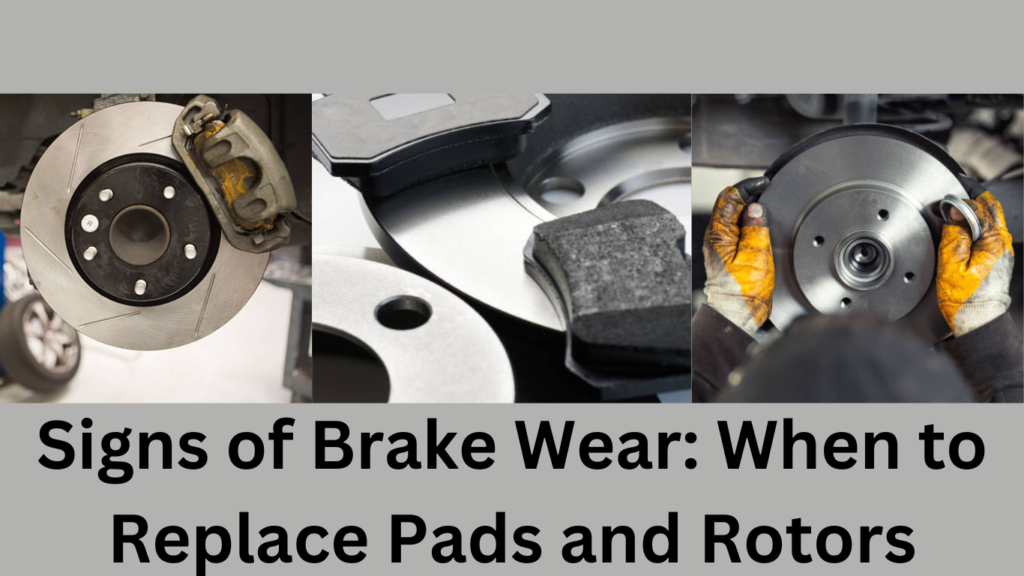Introduction
Maintaining your car’s brakes is essential for both your safety and the longevity of your vehicle. Over time, air can find its way into your brake lines, causing a spongy pedal and reduced braking performance. To ensure your brakes are operating at their best, it’s crucial to bleed the brake system periodically. In this comprehensive guide, we’ll walk you through the process of bleeding your car’s brake system step by step, empowering you to tackle this essential maintenance task with confidence.
Understanding the Basics
Before diving into the brake bleeding process, it’s essential to understand the fundamentals of how your car’s brake system works.
1.1) The Brake System Overview
Your car’s brake system is a hydraulic system that uses brake fluid to transfer force from the brake pedal to the brake calipers or wheel cylinders, creating the friction necessary to stop your vehicle. Air bubbles can disrupt this process, making it less effective.
1.2) Why Brake Bleeding is Necessary
Over time, air can seep into the brake lines, compromising the hydraulic integrity of the system. This leads to a spongy brake pedal and reduced stopping power. Bleeding the brakes removes these air bubbles, restoring the system’s efficiency.
Tools and Materials You’ll Need
Before getting started, gather the following tools and materials:
2.1) Safety Gear
- Safety glasses
- Nitrile gloves
2.2) Tools
- Jack and jack stands
- Lug wrench
- Box-end wrench or socket set
- Clear plastic tubing
- Brake bleeder kit (vacuum pump or one-person brake bleeder)
- Brake fluid
- Brake bleeder wrench (if necessary)
Preparing Your Vehicle
3.1) Safety First
Begin by ensuring your car is parked on a level surface, the engine is off, and the parking brake is engaged. Safety should always be your top priority.
3.2) Lifting the Vehicle
Safely lift the vehicle using a jack and secure it with jack stands. You need to access the brake calipers or wheel cylinders to bleed the brakes effectively.
3.3) Removing the Wheels
Use a lug wrench to remove the wheels on the corners of the car where you plan to bleed the brakes. This provides access to the brake components.
Bleeding the Brake System
Now, let’s dive into the step-by-step process of bleeding your car’s brake system:
4.1) Identify the Brake Bleeder Valve
Locate the brake bleeder valve on the brake caliper or wheel cylinder. Typically, it’s a small screw-like fitting near the top of the brake component.
4.2) Attach the Clear Plastic Tubing
Connect one end of the clear plastic tubing to the bleeder valve. Ensure it’s securely attached.
4.3) Prepare the Brake Bleeder Kit
If you’re using a vacuum pump or one-person brake bleeder, follow the manufacturer’s instructions for setup. These tools make the bleeding process more manageable.
4.4) Open the Brake Bleeder Valve
Use a box-end wrench or socket to gently open the brake bleeder valve. Attach the other end of the tubing to a container to catch the brake fluid that will be expelled during the bleeding process.
4.5) Pump the Brake Pedal
If you don’t have a brake bleeder kit, you’ll need an assistant for this step. Have them slowly press the brake pedal and hold it down.
4.6) Bleed the Brake
While the brake pedal is held down, open the brake bleeder valve slightly. You’ll see a mixture of old brake fluid and air bubbles flowing into the tubing. Close the valve before the assistant releases the brake pedal.
4.7) Repeat the Process
Continue the process (steps 4.5 and 4.6) until no more air bubbles are visible in the tubing. Be sure to check the brake fluid reservoir regularly to prevent it from running dry.
Finishing the Job
5.1) Tighten the Bleeder Valve
Once you’re confident that there are no more air bubbles in the system, tighten the brake bleeder valve securely.
5.2) Top Up the Brake Fluid Reservoir
Open the hood of your car and locate the brake fluid reservoir. Remove the cap and add brake fluid to the “MAX” level. Use the appropriate type of brake fluid recommended in your vehicle’s owner’s manual.
5.3) Check for Leaks
Before putting the wheels back on, visually inspect the area around the brake caliper or wheel cylinder for any signs of brake fluid leaks. If you find any, address the issue immediately.
5.4) Reinstall the Wheels
Carefully put the wheels back on and tighten the lug nuts in a crisscross pattern to ensure even torque.
5.5) Lower the Vehicle
Safely lower the vehicle using the jack and remove the jack stands.
Testing Your Brakes
6.1) Pump the Brake Pedal
Before hitting the road, pump the brake pedal a few times to ensure it feels firm and responsive. This action helps seat the brake pads or shoes against the rotors or drums.
6.2) Take a Test Drive
Go for a short test drive in a safe, low-traffic area. Pay attention to how the brakes feel. They should provide consistent and strong stopping power.
Conclusion
Regular brake maintenance, including bleeding the brake system, is crucial for your safety on the road. By following this detailed walkthrough, you can confidently perform this essential task, ensuring your brakes operate at their best. Remember, if you’re uncomfortable or unsure about any step in the process, it’s always best to consult a professional mechanic. Keep your brakes in top-notch condition, and you’ll enjoy safer journeys and a longer-lasting vehicle.
By taking the time to bleed your car’s brake system, you’re not only ensuring your safety but also gaining a deeper understanding of your vehicle’s vital components. So, roll up your sleeves, grab your tools, and give your brakes the attention they deserve. Your car—and your peace of mind—will thank you for it.



